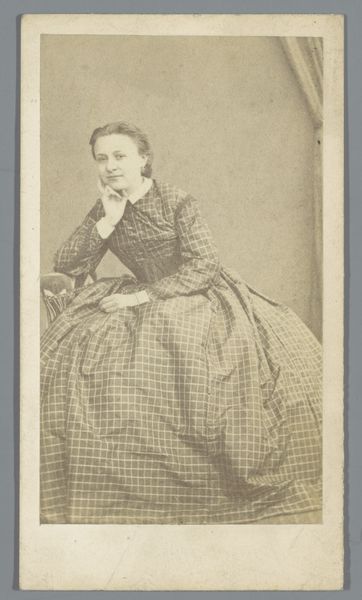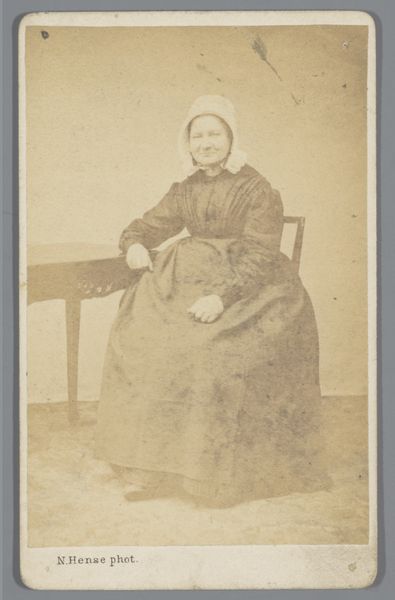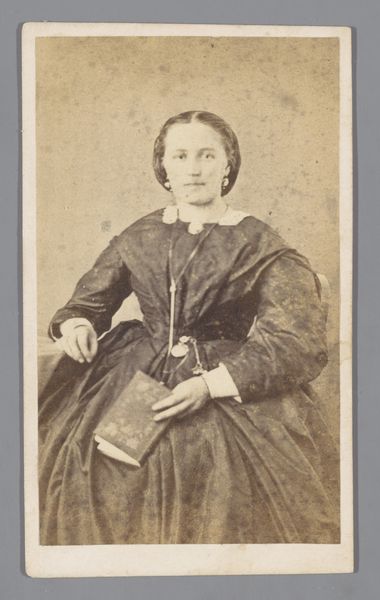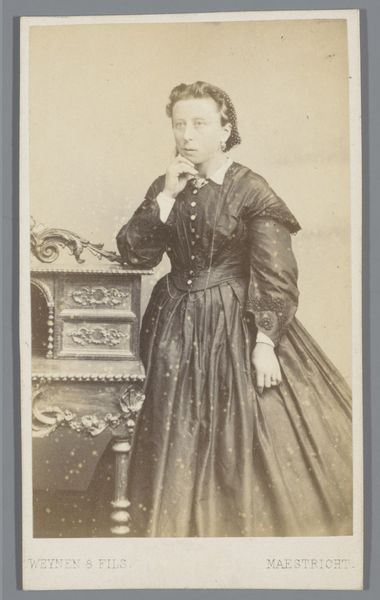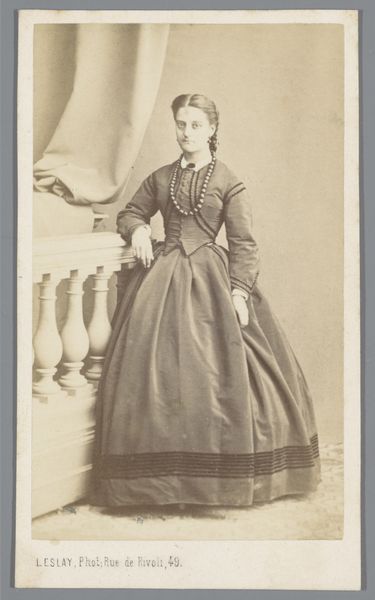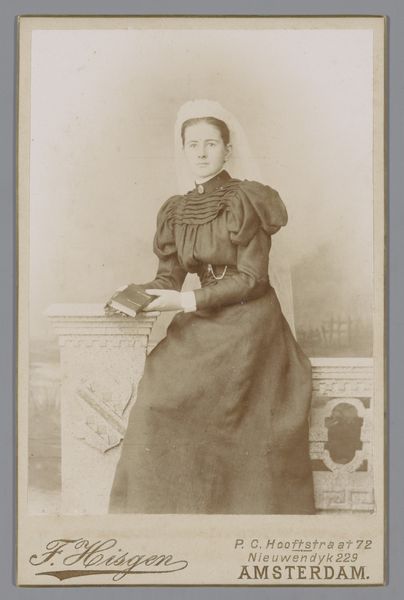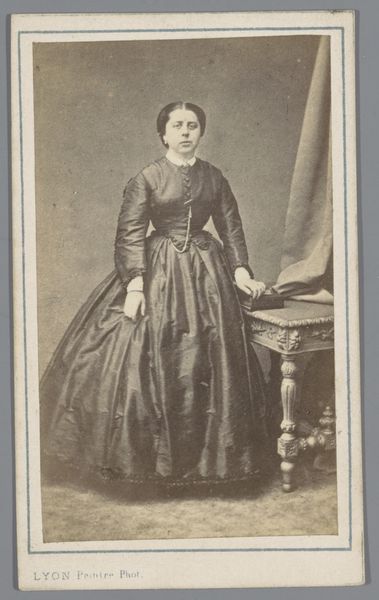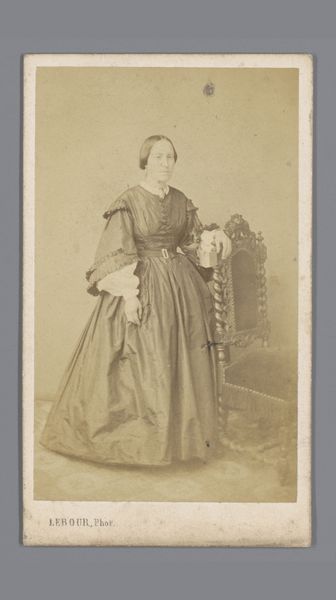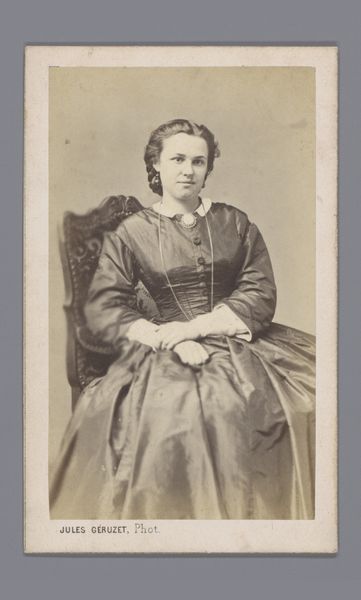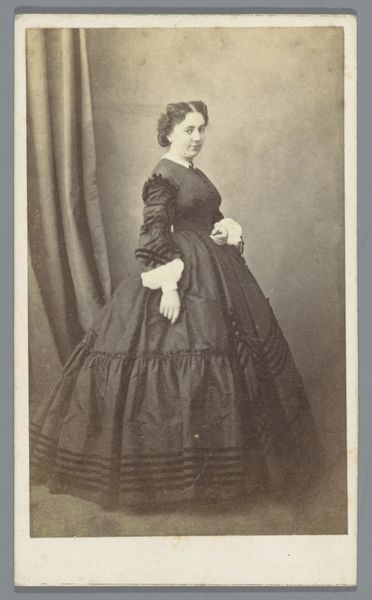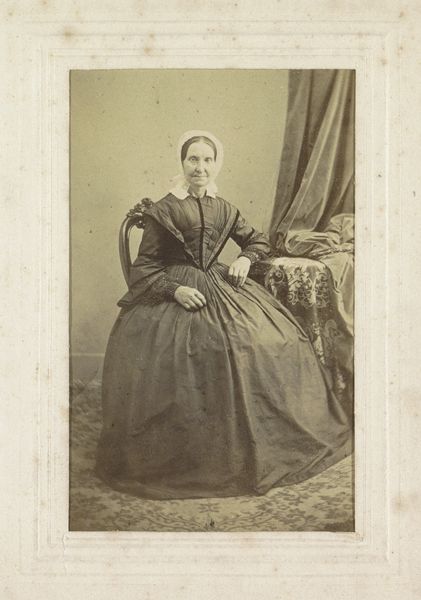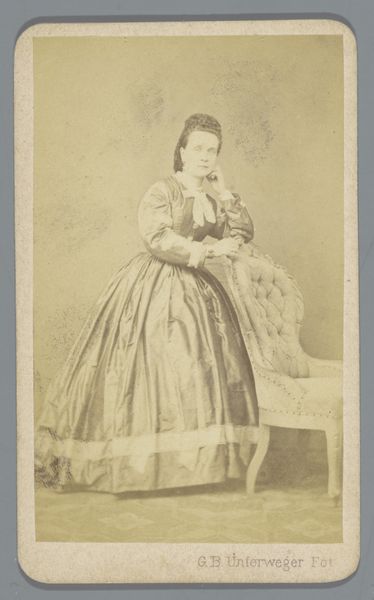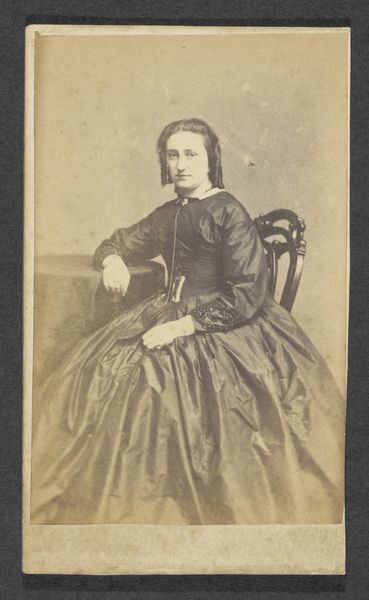
photography
#
portrait
#
photography
#
realism
Dimensions: height 104 mm, width 62 mm
Copyright: Rijks Museum: Open Domain
Editor: So, this is “Portrait of an Unknown Woman” by Johannes Hinderikus Egenberger, taken sometime between 1864 and 1880, using photography. The subdued tones create a somber mood. The woman's dress really catches the eye. How do you interpret the visual language in this portrait? Curator: The stripes definitely grab our attention. Think about the symbolism of lines – they can represent boundaries, social structures, or even confinement. Her dress isn't just a fashion statement; it's a signifier. Does it perhaps hint at the limitations placed upon women of that era, subtly visualized? Editor: That’s a really interesting take! I was just thinking it might be a fashionable choice for the time, but now that you mention confinement, it makes me see something different. Her expression seems a bit resigned, maybe? Curator: Exactly. The eyes, the slight downturn of the mouth – these all contribute. Then consider the ornate chair, a throne almost. What does that juxtaposition – between her perhaps constrained state and the symbol of power – tell us? The artist deliberately layers symbols, prompting questions rather than providing answers. Editor: I see it now. It’s almost like the chair is mocking her. What do you think she might be thinking? Curator: Ah, that is a very subjective and personal exploration. Maybe contemplating societal expectations, a secret longing, a quiet rebellion… This is why, even with realistic portraits, we still question what has been omitted. What stories remained untold, obscured, or merely implied? Editor: This has completely changed how I see the piece. I went in thinking it was just a straightforward portrait. Curator: Indeed! And now hopefully you appreciate how seemingly simple photographs, of this period, are filled with potent symbols reflecting cultural memories.
Comments
No comments
Be the first to comment and join the conversation on the ultimate creative platform.
